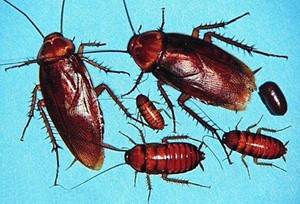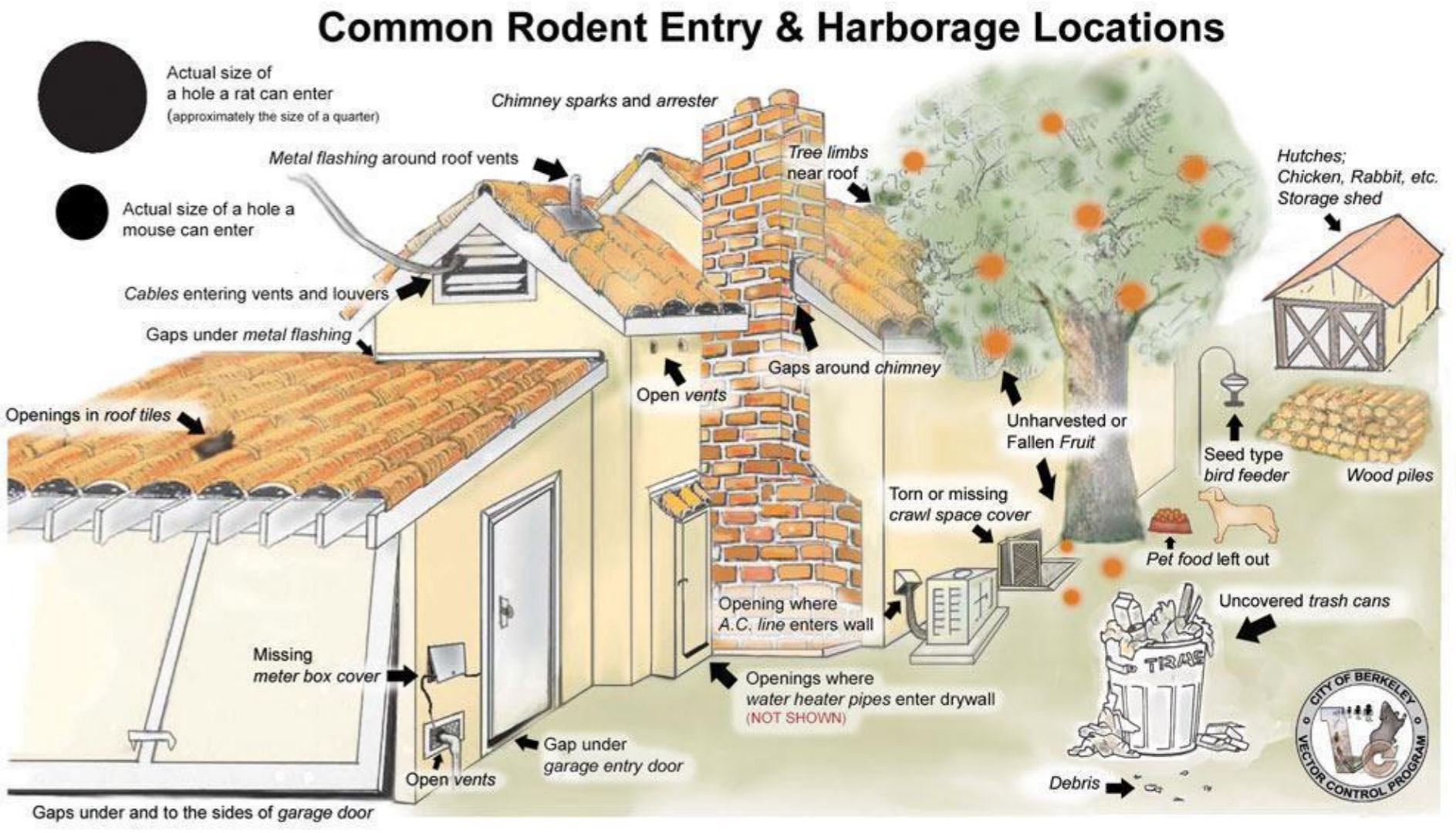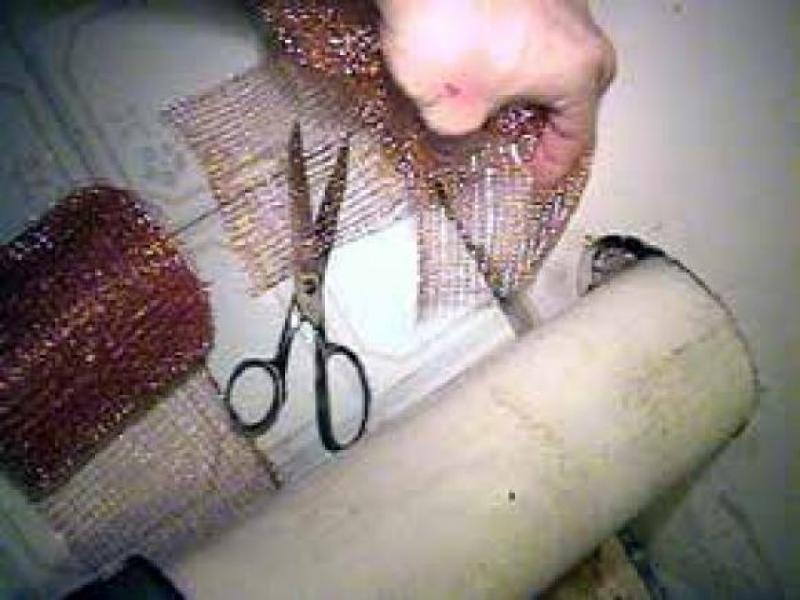Insects, rodents, and other pests are more than just a nuisance; they can carry diseases, aggravate asthma symptoms, and spread germs and they can cause considerable property and structural damage if their activities go undetected for any length of time. Termites alone cause over $5 billion of damage to property in the U.S. each year, according to the National Pest Management Association. Infestations of dust mites, cockroaches, mice, and rats can all cause allergic reactions and even after they are gone, their skin, hair, and feces can remain to aggravate allergies. Although termites are more prevalent in the south and south-eastern United States (see Figure 1), pests are found in every part of the country (Figure 2). Consult local code and building departments to find out what is prevalent in your area.


While the use of chemicals and poisons are common conventional methods for preventing or treating pest infestations, relying solely on their use increases ongoing maintenance activities and costs for the homeowner and some of these products can contribute to health and safety concerns of their own. Fortunately, there are many steps builders can take during home construction that can reduce the opportunities for pest intrusion and damage and minimize the need for pesticides (Figure 3).
All pests need food, water, and shelter for survival. If these are readily accessible to pests in and around the home, they will take up residence. Builders can take an integrated pest management approach incorporating multiple pest resistance measures, sometimes in conjunction with pesticides, to eliminate or minimize access and to make the home an inhospitable place for pests.
The steps that builders take to air seal the building envelope will also help to keep out insects and rodents. Several of these steps are described in Solution Center guides linked to the ENERGY STAR Rater Field Checklist. The steps that builders take to manage water and moisture will also make a home less inviting to pests. For example, damp wood is especially appealing to termites and carpenter ants, and standing water is an attractant for all manner of pests. The Building America Solution Center has several guides to help builders construct homes that can effectively manage moisture in the home and drain water from the home and the site. These guides are listed under the ENERGY STAR Water Management System Builder Checklist and the EPA Indoor airPLUS Moisture Control checklist.

Key Strategies
Here are several key strategies builders can employ to make the home more pest resistant, along with just a few examples of each. These tactics can be employed throughout the home. Many more strategies are listed in the guide Reduce Pest Intrusion and in the guides listed below.
Choose pest-resistant building materials.
- Use insect-resistant materials including brick, concrete, stone, fiber cement, aluminum, steel, rigid plastics, and naturally pest-resistant wood species and insulation or borate-treated lumber and insulation materials.
Block pest entries.
- Use simple roof designs that have few gables, valleys, and intersections which are hard to flash and can trap vegetation and provide nesting places.
- Seal at joints along top and bottom plates, around doors and windows, and around all openings in the building envelope using flashing, gaskets, escutcheons, metal mesh and sealants (Figure 4).
- Install durable metal screening over all vents (except dryer vents); install a screened chimney cap; install insect screens on openable windows and install sturdy, reinforced screen doors.
- Use reinforced concrete, good curing practices, and limited joints in concrete slabs to minimize openings and cracking in concrete and install mesh and sand barriers around foundations in heavy termite areas.
- Install weather stripping and metal sweeps on exterior doors.

Reduce food and water availability.
- Employ good site drainage practices.
- Install flashings, weather resistant barriers, and screened drainage gaps to keep roof and wall elements dry.
- Keep irrigation and plants away from foundations.
- Keep interiors dry with mechanical ventilation and dehumidifiers where needed.
Minimize clutter and dust.
- Provide outside storage including garages and sheds.
- Provide inside storage including closets and cabinets (seal all holes behind and under cabinets before installing).
- Provide hard-surface and easy-clean vinyl and tile flooring at entryways and wet areas.
- Install high-MERV filters and consider central vacuums that take dirt outside.
Building America Solution Center Guides for Pest-Resistant Construction
Here is a comprehensive list of guides in the Building America Solution Center that employ these tactics in specific areas of the home.
Design
Roofs
Walls/Windows/Doors
- Termite-Resistant Foundations and Walls
- Moisture-, Impact-, Fire-, and Pest-Resistant Exterior Siding
- Window and Door Openings Fully Flashed
- Air Sealing Doors Adjacent to Unconditioned Space
Building Attachments
Foundations
- Screens and Other Deterrents for Birds, Rodents, and Other Pests
- Air Sealed, Insulated Basements
- Unvented, Insulated Crawlspaces
- Rigid Foam Board Interior Insulation for Existing Foundation Walls
- Air Sealing Sill Plates
- Pest-Resistant Ground Breaks at Foundation Perimeter
- Termite-Resistant Foundations and Walls
More Info
The following authors and organizations contributed to the content in this Guide.
Building Science Corporation
Pacific Northwest National Laboratory